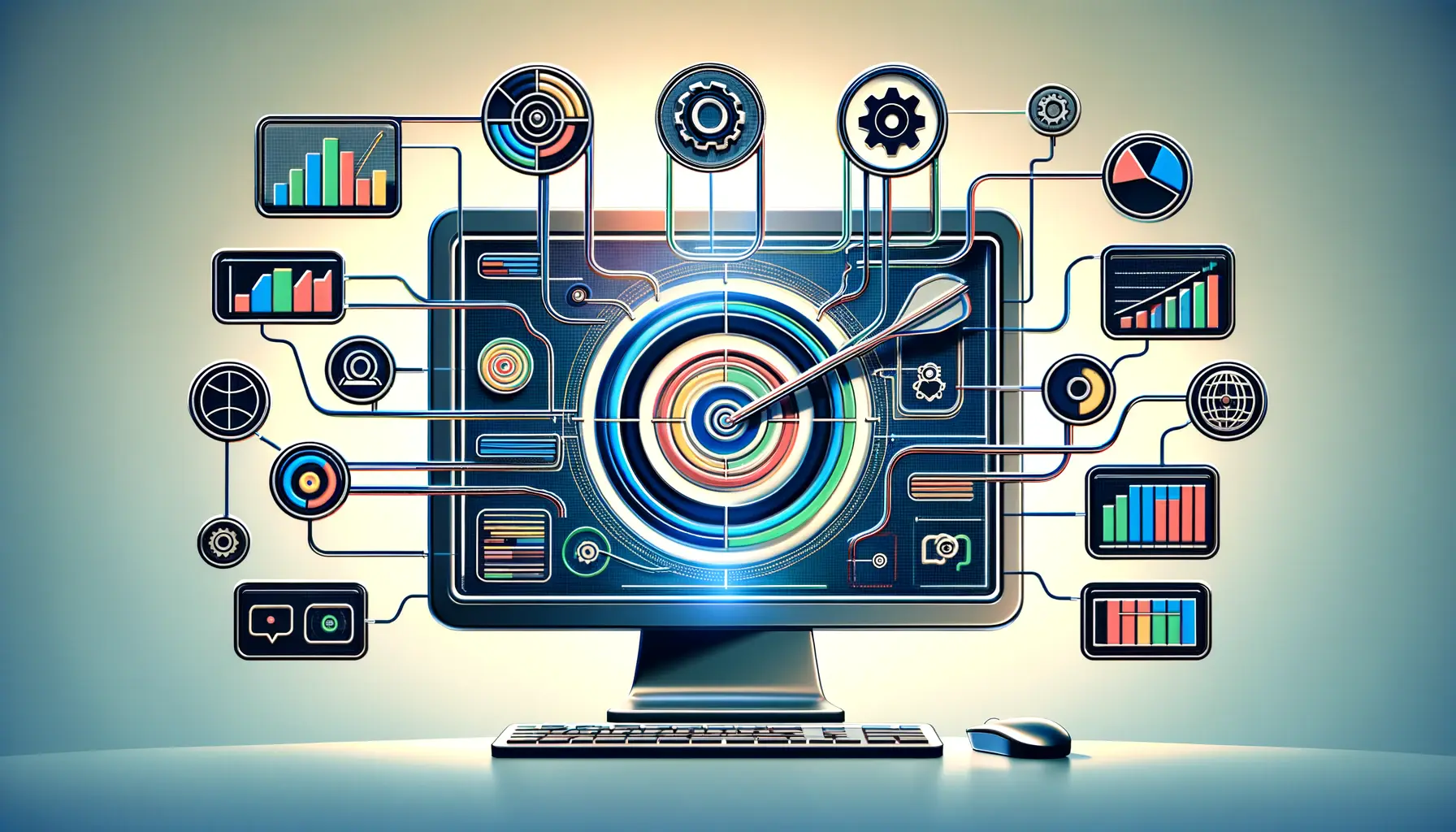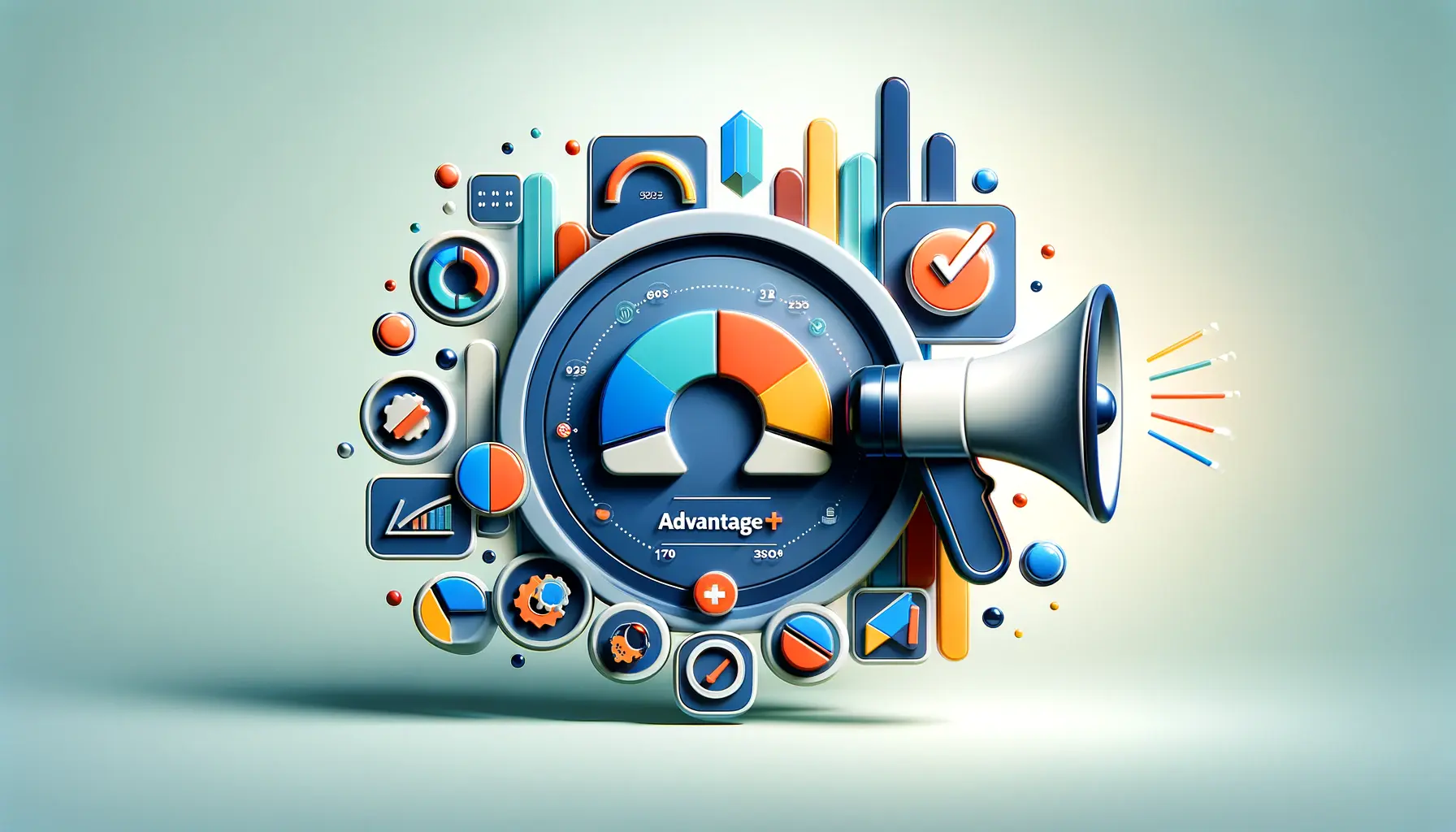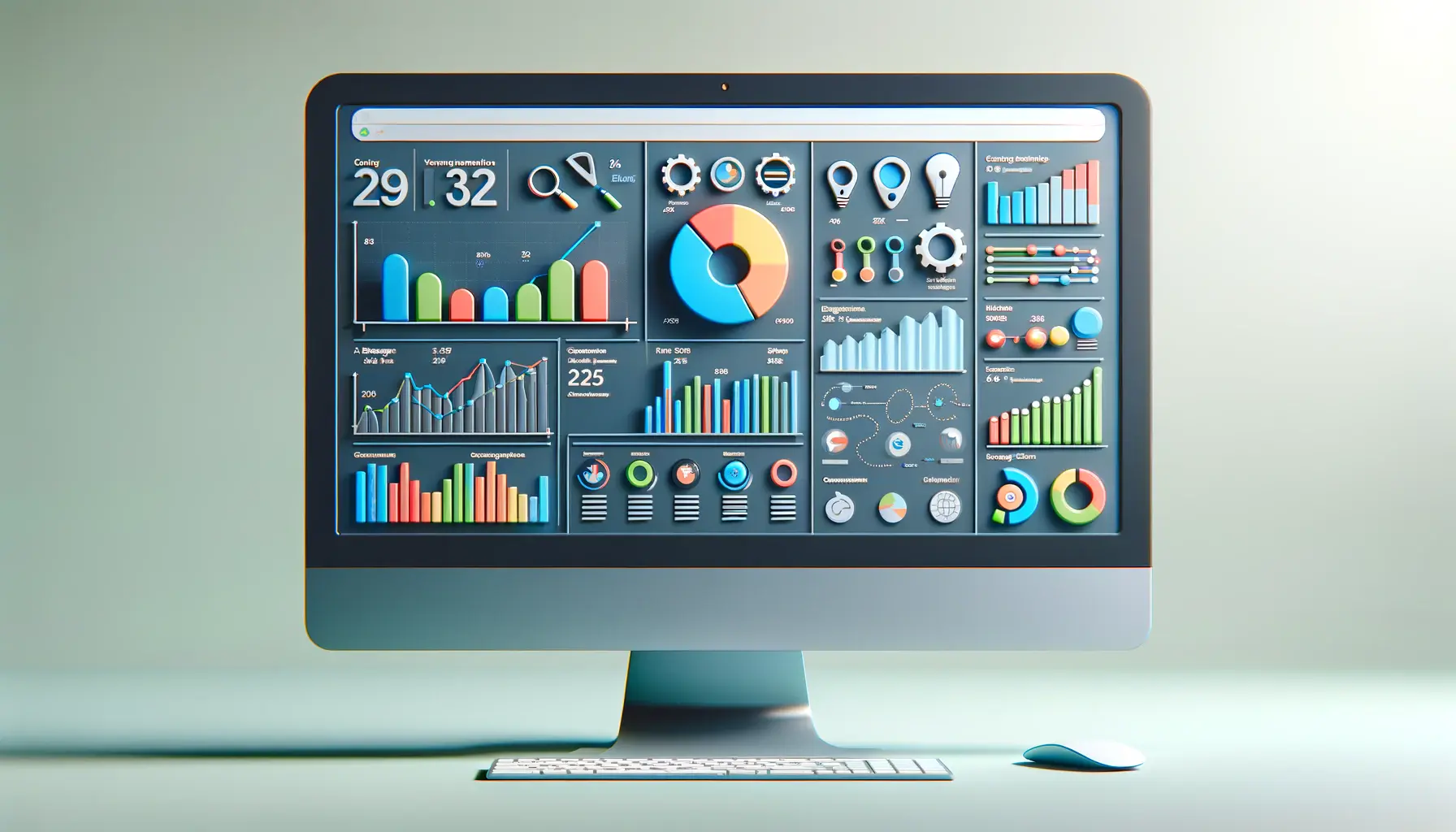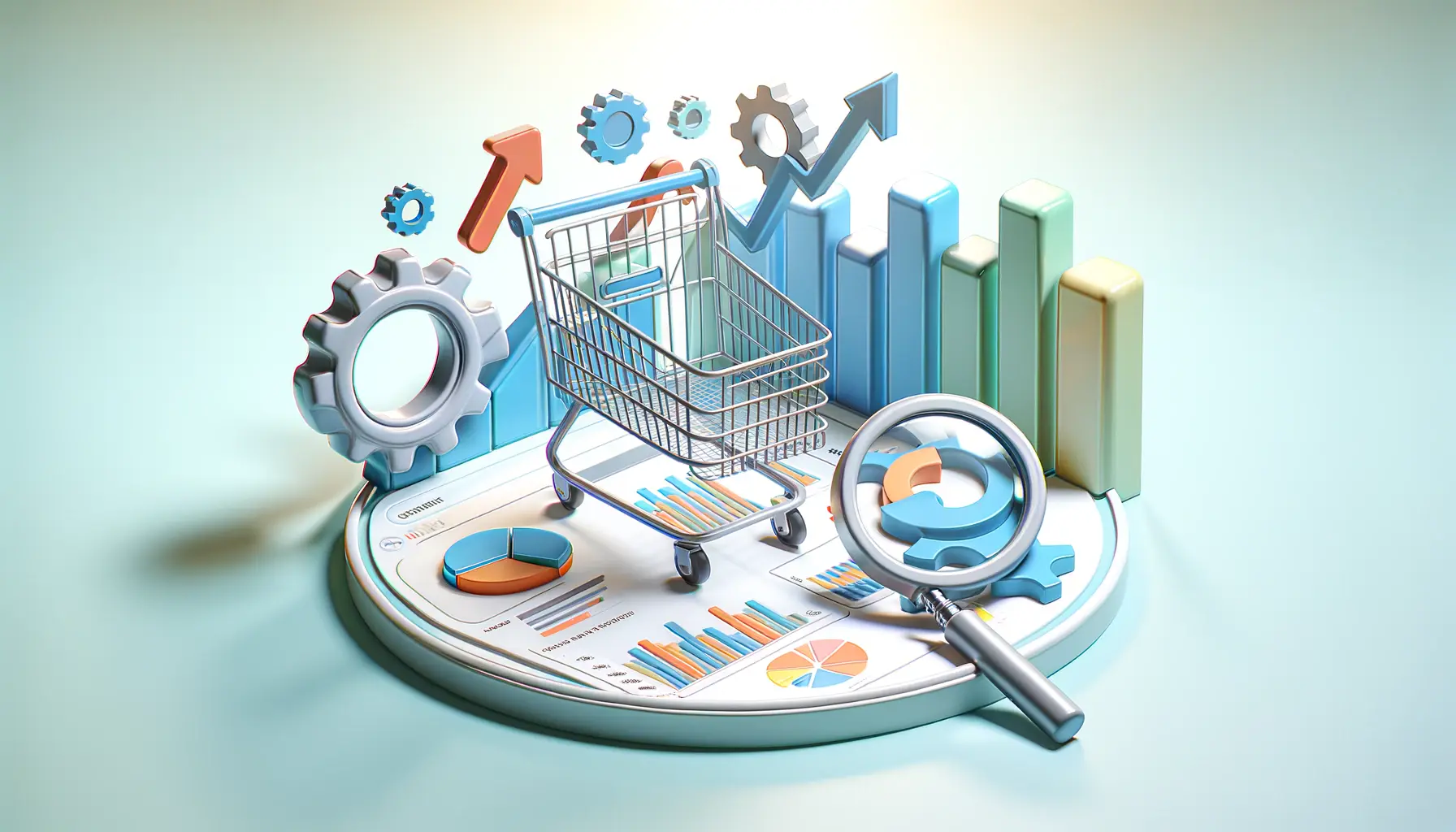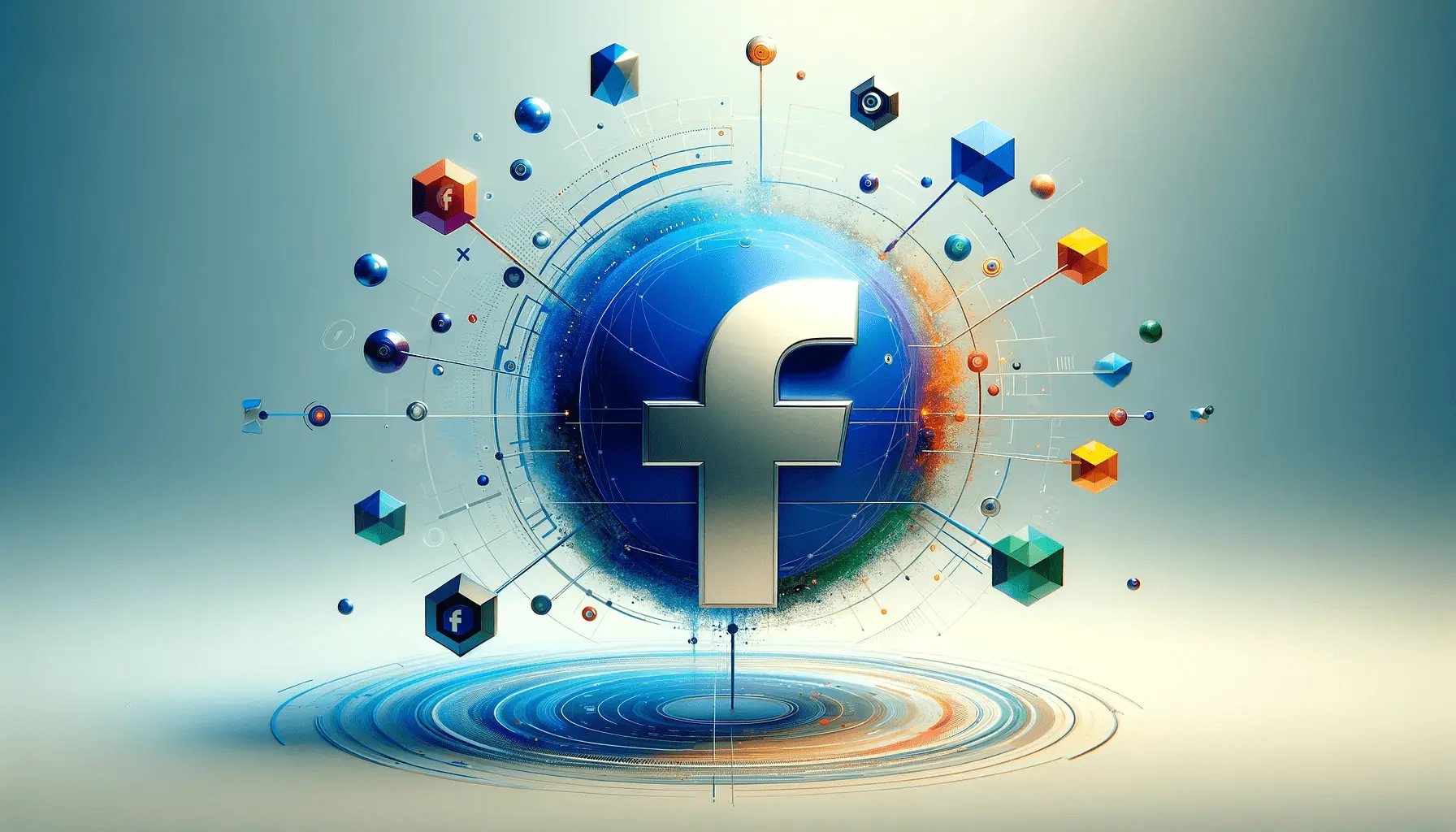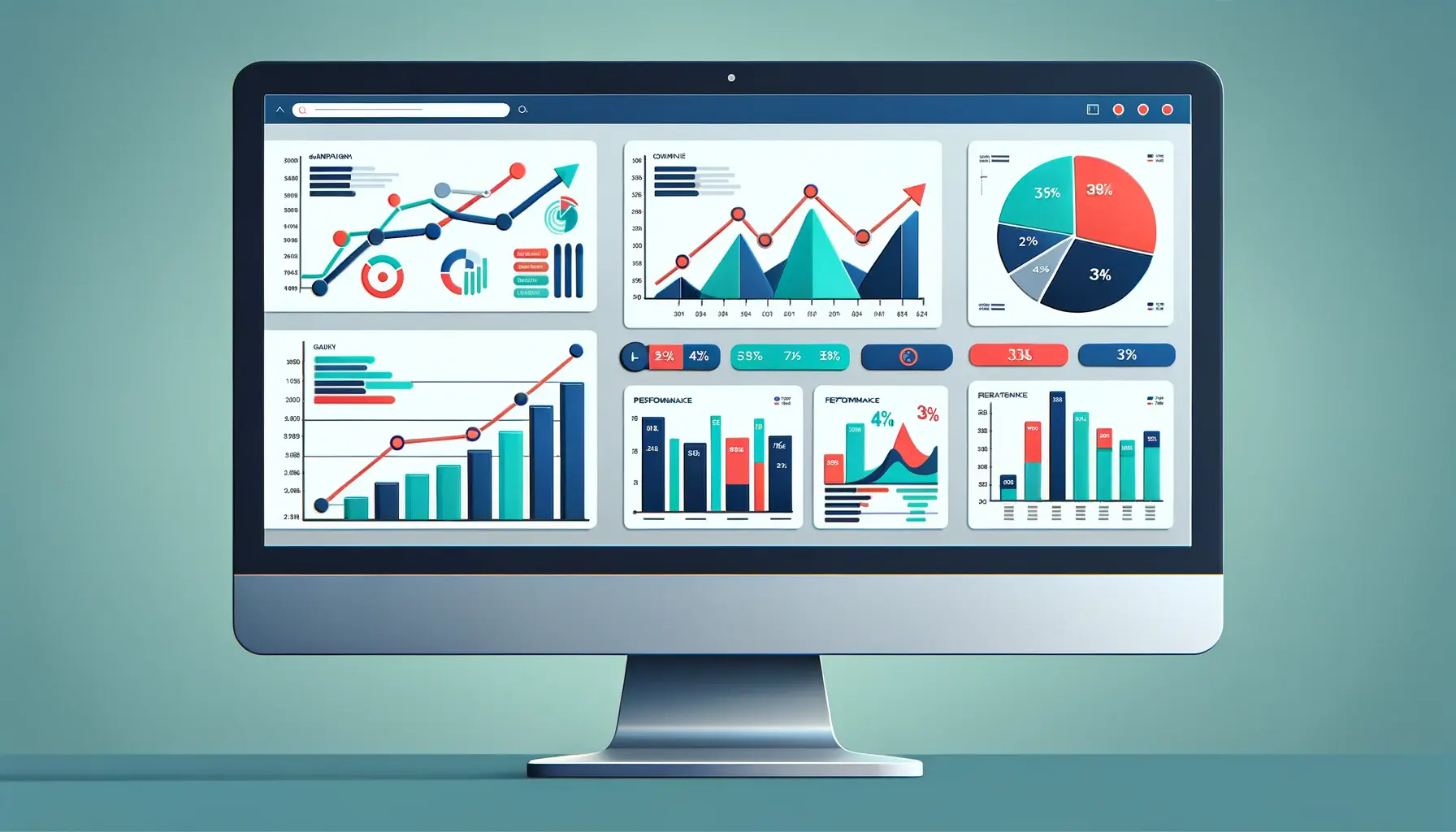In the digital age, the intersection of technology and marketing strategies has revolutionized the way businesses engage with their audiences.
The advent of sophisticated digital tools and platforms has opened up new avenues for marketers to craft smarter, more effective campaigns.
This evolution is particularly evident in the realm of Facebook Advantage+, a category that stands at the forefront of leveraging technology to maximize campaign performance.
By integrating advanced technologies, marketers can now deliver personalized experiences, drive higher engagement, and achieve unprecedented levels of campaign efficiency and effectiveness.
The essence of smarter campaigns lies in their ability to use data analytics, artificial intelligence (AI), machine learning (ML), and other technological innovations to understand and predict consumer behavior.
These insights allow for the optimization of every aspect of a campaign, from targeting and content creation to delivery and measurement.
The result is a highly tailored approach that resonates with the target audience, ensuring that marketing messages are not just seen but are also impactful and engaging.
As we delve deeper into the role of technology in shaping smarter campaigns, it becomes clear that the future of marketing is not just digital; it’s technologically sophisticated and data-driven.
- Understanding the Digital Landscape
- Maximizing Engagement Through Personalization
- Enhancing Campaign Efficiency with Automation
- Leveraging Social Media for Broader Reach
- Optimizing for Mobile: A Necessity in Digital Strategy
- Incorporating Video Content for Higher Engagement
- Tracking and Analyzing Campaign Performance
- Empowering Marketing Success Through Technology
- FAQs on Smarter Campaigns with Technology
Understanding the Digital Landscape
The Role of Data Analytics
Data analytics has become the backbone of modern marketing strategies, providing insights that guide every decision in the campaign creation process.
By analyzing vast amounts of data, marketers can uncover patterns in consumer behavior, preferences, and engagement.
This information is crucial for segmenting audiences, personalizing messages, and predicting future trends.
The power of data analytics lies in its ability to turn raw data into actionable insights, enabling marketers to craft campaigns that are not only relevant but also highly effective in achieving their objectives.
Moreover, the continuous evolution of data analytics tools has made it easier for marketers to access and interpret data.
From simple dashboard visualizations to complex predictive models, these tools offer a range of functionalities that cater to different needs and skill levels.
The key to leveraging data analytics lies in understanding which metrics matter most to your campaign goals and how to interpret them to make informed decisions.
Artificial Intelligence and Machine Learning
AI and ML are transforming the marketing landscape by automating complex processes and providing deeper insights into consumer behavior.
These technologies can analyze data at a scale and speed that is beyond human capability, identifying trends and patterns that would otherwise go unnoticed.
For Facebook Advantage+ campaigns, AI and ML can optimize ad delivery in real-time, ensuring that ads are shown to the right people at the right time.
This not only improves the efficiency of ad spend but also increases the likelihood of achieving desired outcomes.
Furthermore, AI-powered chatbots and virtual assistants have opened up new channels for customer engagement.
These tools can handle inquiries, provide personalized recommendations, and even facilitate transactions, enhancing the customer experience while freeing up human resources for more complex tasks.
The integration of AI and ML into marketing campaigns represents a significant shift towards more interactive, responsive, and intelligent marketing strategies.
Incorporating technology into marketing campaigns is not just about leveraging new tools; it’s about transforming the approach to marketing to be more data-driven, personalized, and efficient.
Maximizing Engagement Through Personalization
The digital era has ushered in a new level of expectation among consumers for personalized experiences.
Personalization in marketing campaigns is no longer a luxury but a necessity.
Technology plays a pivotal role in enabling marketers to deliver content that speaks directly to the individual interests and needs of their audience.
This section explores how technology facilitates personalization and the impact it has on engagement and conversion rates.
At the heart of effective personalization is the collection and analysis of user data.
This includes demographic information, browsing behavior, purchase history, and social media interactions.
By leveraging this data, marketers can create highly targeted campaigns that resonate with their audience on a personal level.
The use of technology in this process cannot be overstated; it is the tool that turns data into insights and insights into action.
Techniques for Personalized Campaigns
- Segmentation: Dividing the audience into smaller, more homogenous groups based on shared characteristics. This allows for more targeted messaging that appeals to specific interests or needs.
- Dynamic Content: Automatically altering the content of an ad or email based on the user’s past interactions with the brand. This could include showcasing products similar to those previously viewed or purchased.
- Behavioral Triggers: Initiating specific marketing actions based on user behavior. For example, sending a re-engagement email when a user has not interacted with the brand for a certain period.
Benefits of Personalization
Personalization has a profound impact on the effectiveness of marketing campaigns.
By delivering content that is relevant and meaningful to the audience, brands can significantly improve engagement rates.
This relevance drives a deeper connection with the audience, fostering loyalty and increasing the likelihood of conversion.
Moreover, personalization can enhance the overall customer experience, making interactions with the brand more enjoyable and satisfying.
However, the key to successful personalization lies in the balance between relevance and privacy.
Marketers must navigate the fine line of using data to create personalized experiences without infringing on the privacy of their audience.
Transparency about data collection practices and offering users control over their data are essential steps in building trust and maintaining a positive brand image.
Effective personalization requires a deep understanding of the audience, sophisticated data analysis capabilities, and the creative application of technology to turn insights into engaging marketing messages.
Enhancing Campaign Efficiency with Automation
The advent of automation technology has been a game-changer for digital marketing, particularly in managing and optimizing campaigns.
Automation tools streamline repetitive tasks, reduce the likelihood of human error, and enable marketers to focus on strategy and creative development.
This part delves into how automation enhances campaign efficiency and the various aspects of marketing it can improve.
From scheduling posts on social media to segmenting email lists and personalizing content, automation touches almost every facet of digital marketing.
Its impact on efficiency is profound, allowing for more to be done in less time and with fewer resources.
The key benefits of automation include improved workflow, consistent messaging across channels, and the ability to quickly adjust strategies based on real-time data.
Key Areas of Marketing Automation
- Email Marketing: Automating email campaigns can significantly increase engagement by ensuring timely delivery and personalization. Automated workflows can trigger emails based on specific actions, such as a welcome email upon subscription or a follow-up email after a purchase.
- Social Media Management: Scheduling posts in advance and monitoring social media interactions can be efficiently managed through automation tools. This ensures a consistent online presence and timely responses to customer inquiries or comments.
- Ad Campaigns: Automation in ad campaigns allows for real-time bidding and the automatic adjustment of ad placements and targeting based on performance analytics. This dynamic approach ensures that ad spend is optimized for the best possible return on investment.
Implementing Automation for Maximum Impact
To fully leverage the benefits of automation, it’s crucial to choose the right tools and technologies that align with your marketing goals and capabilities.
The implementation of automation should be strategic, with a clear understanding of which tasks to automate and how they fit into the overall marketing strategy.
Additionally, while automation can handle many tasks, human oversight is essential to ensure that campaigns remain creative, authentic, and aligned with the brand’s voice.
Ultimately, the goal of automation is not to replace the marketer but to empower them.
By automating routine tasks, marketers can devote more time to analyzing campaign performance, refining strategies, and crafting compelling content that resonates with their audience.
In this way, automation not only enhances efficiency but also contributes to the creation of more effective and impactful marketing campaigns.
While automation can significantly improve efficiency, it’s important to maintain a balance between automated and human elements in your campaigns to ensure they remain engaging and personalized.
Leveraging Social Media for Broader Reach
In the landscape of digital marketing, social media platforms stand out as powerful channels for expanding campaign reach and engagement.
The ubiquity of social media in consumers’ daily lives makes it an essential tool for marketers aiming to connect with their audience where they spend a significant amount of time.
This part explores strategies for leveraging social media to enhance campaign visibility and foster community engagement.
Effective social media marketing goes beyond posting regular updates; it involves engaging with the audience, understanding their preferences, and delivering content that adds value to their social media experience.
The dynamic nature of social media requires marketers to be agile, creative, and responsive to trends and feedback.
By doing so, brands can build a loyal following and turn followers into advocates.
Strategies for Social Media Engagement
- Content Variety: Mix up your content types to keep your social media feeds interesting. Use a combination of text posts, images, videos, and live streams to engage different segments of your audience.
- Interactive Elements: Incorporate polls, quizzes, and contests to encourage active participation from your audience. These elements can also provide valuable insights into your audience’s preferences and behaviors.
- User-Generated Content: Encourage your followers to share their own content related to your brand, such as product reviews or photos. This not only boosts engagement but also provides authentic endorsements of your products or services.
Building a Community on Social Media
One of the most significant advantages of social media is its ability to foster a sense of community among users.
Brands that successfully create a community around their products or services benefit from increased loyalty, word-of-mouth promotion, and customer retention.
To build a community, focus on consistent engagement, providing value through informative and entertaining content, and fostering conversations around shared interests.
Remember, the goal is to create a space where your audience feels connected to your brand and to each other.
Moreover, social media platforms offer advanced targeting options for paid campaigns, allowing marketers to reach specific demographics, interests, and behaviors.
This precision targeting ensures that your message reaches the most relevant audience, increasing the effectiveness of your campaigns.
By combining organic engagement strategies with targeted paid promotions, brands can maximize their visibility and impact on social media.
Social media is not just a marketing channel; it’s a platform for building relationships with your audience. Successful social media campaigns are those that engage, entertain, and educate, creating a lasting connection with the brand.
Optimizing for Mobile: A Necessity in Digital Strategy
In today’s fast-paced digital world, optimizing marketing campaigns for mobile devices is not just an option; it’s a necessity.
With the increasing prevalence of smartphones and tablets as the primary means of accessing the internet, mobile optimization ensures that your campaigns are accessible and engaging for the vast majority of your audience.
This part discusses the importance of mobile optimization and provides strategies for creating mobile-friendly marketing content.
Mobile optimization encompasses various aspects of digital marketing, from website design and email format to ad display and social media interactions.
The goal is to provide a seamless and enjoyable experience for users accessing your content on a mobile device.
This requires attention to design, loading times, and content layout, ensuring that all elements are easily navigable on a smaller screen.
Strategies for Mobile Optimization
- Responsive Design: Ensure your website and emails adapt to the screen size of the device they are viewed on. Responsive design improves usability and encourages longer engagement times.
- Mobile-Friendly Content: Keep your content concise and easily digestible. Large blocks of text can be overwhelming on a small screen, so break up text with headings, bullet points, and images.
- Touch-Friendly Navigation: Design your website and ads with touch navigation in mind. Buttons and links should be easy to tap, and forms should be simplified for easy completion on mobile devices.
Enhancing User Experience on Mobile
Improving the mobile user experience goes beyond technical optimization; it’s about understanding the mobile user’s context and needs.
Mobile users are often on the go, seeking quick answers or looking to complete tasks efficiently.
By streamlining the path to conversion—whether it’s making a purchase, signing up for a newsletter, or filling out a contact form—you can significantly increase the effectiveness of your mobile campaigns.
Additionally, leveraging mobile-specific features such as location services can enhance personalization and relevance.
For example, location-based targeting in ads can drive foot traffic to nearby stores, while push notifications can alert users to timely offers and updates.
By integrating these mobile-specific strategies into your campaigns, you can create more personalized and contextually relevant experiences for your audience.
Mobile optimization is a critical component of modern digital marketing strategies. By ensuring your campaigns are tailored for mobile devices, you can improve reach, engagement, and conversions among your increasingly mobile-centric audience.
Incorporating Video Content for Higher Engagement
The power of video content in digital marketing cannot be overstated.
In an era where consumers are bombarded with information, video stands out as a dynamic and engaging medium that can capture attention, convey messages succinctly, and leave a lasting impression.
This part explores the significance of incorporating video content into your marketing campaigns and offers strategies for maximizing its impact.
Video content has the unique ability to combine visual elements, sound, and storytelling to create an immersive experience for the viewer.
Whether it’s a short social media clip, an informative tutorial, or an emotional brand story, videos can engage audiences in ways that text and images alone cannot.
The versatility of video also means it can be adapted for various platforms, from YouTube and Facebook to Instagram and TikTok, allowing brands to reach their audience wherever they are.
Strategies for Effective Video Marketing
- Storytelling: Use video to tell stories that resonate with your audience. Emotional storytelling can create a strong connection between your brand and your viewers, increasing brand loyalty.
- Educational Content: Provide value to your audience by creating educational or how-to videos related to your products or services. This not only helps establish your brand as an authority in your field but also drives engagement by offering useful information.
- User Engagement: Encourage user interaction by incorporating calls-to-action in your videos. Ask viewers to like, share, comment, or follow, turning passive viewers into active participants in your brand’s community.
Maximizing Video Engagement Across Platforms
To maximize the reach and impact of your video content, it’s important to tailor your videos to the specific platform you’re using.
For example, shorter, more casual videos may perform better on social media platforms like Instagram and TikTok, while longer, more detailed content may be suited for YouTube or your website.
Additionally, consider the viewing habits of your audience on each platform, such as whether they’re likely to watch with sound on or off, and optimize your videos accordingly.
Another key to success with video content is consistency.
Regularly posting new videos keeps your audience engaged and encourages them to return for more.
This can be achieved by creating a content calendar and planning your video content in advance.
By incorporating video into your overall marketing strategy and aligning it with your brand’s goals and messaging, you can leverage the power of video to captivate your audience, enhance brand visibility, and drive meaningful engagement.
Video content is a powerful tool for engaging and connecting with your audience. By leveraging storytelling, providing educational value, and optimizing for platform-specific viewing habits, you can create video campaigns that resonate deeply with viewers and drive engagement.
Tracking and Analyzing Campaign Performance
Understanding the effectiveness of your marketing campaigns is crucial for continuous improvement and achieving a higher return on investment (ROI).
Tracking and analyzing campaign performance allows marketers to identify what works, what doesn’t, and where adjustments need to be made.
This final part of our discussion focuses on the importance of performance analysis and the tools and metrics that can help marketers measure success.
With the vast array of digital marketing channels available today, it’s essential to have a comprehensive approach to tracking campaign performance.
This involves collecting data from various sources, including website analytics, social media insights, email marketing platforms, and ad networks.
By integrating this data, marketers can gain a holistic view of their campaign’s impact and make informed decisions based on accurate, real-time information.
Essential Metrics for Measuring Success
- Conversion Rates: The percentage of users who take a desired action, such as making a purchase or signing up for a newsletter, which directly reflects the effectiveness of your campaign in driving results.
- Engagement Rates: Measures how actively involved your audience is with your content, including likes, shares, comments, and time spent on your website or viewing a video.
- Click-Through Rates (CTR): The ratio of users who click on a specific link to the number of total users who view a page, email, or ad, indicating the attractiveness of your call-to-action.
- Return on Investment (ROI): Calculates the profitability of your campaigns by comparing the revenue generated to the cost of the campaigns, providing a clear picture of financial effectiveness.
Utilizing Analytics Tools for Deeper Insights
To effectively track and analyze campaign performance, marketers can utilize a variety of analytics tools.
These tools offer detailed insights into user behavior, campaign reach, conversion paths, and much more.
Popular analytics platforms like Google Analytics, Facebook Insights, and specialized marketing automation tools provide a wealth of data that can be used to optimize campaigns.
The key is to regularly review this data, conduct A/B testing to compare different strategies, and adjust your campaigns based on the insights gained.
Moreover, setting clear, measurable goals for each campaign is essential for meaningful analysis.
By defining what success looks like, marketers can better align their tracking efforts with their objectives, ensuring that they focus on the metrics that matter most.
Whether it’s increasing brand awareness, driving sales, or enhancing customer engagement, having specific goals in mind allows for targeted analysis and more effective campaign optimization.
Regularly tracking and analyzing your marketing campaigns is essential for understanding their performance and making data-driven decisions to improve future strategies. By focusing on key metrics and utilizing analytics tools, marketers can optimize their campaigns for better results and higher ROI.
Empowering Marketing Success Through Technology
In the realm of digital marketing, the integration of technology has not only been transformative but also imperative for success.
As we’ve explored the multifaceted approach to smarter campaigns with technology, it’s evident that the future of marketing lies in leveraging digital innovations.
From data analytics and AI to mobile optimization and video content, each element plays a crucial role in crafting campaigns that are not only engaging but also highly effective in achieving marketing objectives.
Key Takeaways for Marketers
The journey through the digital marketing landscape underscores the importance of adopting a technology-driven approach.
Here are some key takeaways for marketers aiming to harness the power of technology in their campaigns:
- Personalization and automation are not just trends but necessities that can significantly enhance campaign engagement and efficiency.
- Social media remains a powerful tool for expanding reach and building community, with strategies tailored to each platform yielding the best results.
- Mobile optimization is essential for reaching the modern consumer, emphasizing the need for responsive design and mobile-friendly content.
- Video content continues to dominate in terms of engagement, offering a dynamic medium for storytelling and brand promotion.
- Tracking and analyzing campaign performance is crucial for understanding impact and guiding future strategies towards greater success.
Looking Ahead: The Future of Digital Marketing
As technology continues to evolve, so too will the strategies and tools available for digital marketing.
The adoption of emerging technologies such as augmented reality (AR), virtual reality (VR), and advanced AI algorithms will open new avenues for creating immersive and interactive marketing experiences.
Marketers who stay ahead of these trends and continuously adapt their strategies will not only survive but thrive in the competitive digital landscape.
In conclusion, the integration of technology in marketing campaigns is not just about keeping up with the latest digital trends.
It’s about understanding and leveraging these tools to connect with audiences in meaningful ways, deliver personalized experiences, and achieve measurable results.
As we move forward, the synergy between technology and creativity will remain the cornerstone of smarter, more effective marketing campaigns.
Embracing this evolution is the key to unlocking unprecedented success in the digital marketing domain.
Enjoyed the article? Let its author handle your social media ads. Visit our service page to get started!
FAQs on Smarter Campaigns with Technology
Explore common questions about leveraging technology to enhance your marketing campaigns.
A Smart Campaign utilizes AI and machine learning to optimize ad performance across digital platforms, enhancing targeting and efficiency.
AI analyzes user data to deliver tailored content, improving engagement by addressing individual preferences and behaviors.
Yes, through data analytics and machine learning, technology can forecast outcomes and guide strategic adjustments for better results.
With the majority of users accessing content via mobile devices, optimization ensures a seamless user experience and higher engagement.
Video content offers dynamic storytelling and visual appeal, significantly increasing user interest and interaction with campaigns.
Social media platforms provide extensive reach and engagement opportunities, allowing for direct interaction and community building.
Tracking is essential for measuring performance, understanding audience behavior, and optimizing strategies for improved outcomes.
Automation streamlines processes, enhances efficiency, and allows marketers to focus on strategic and creative aspects of campaigns.

